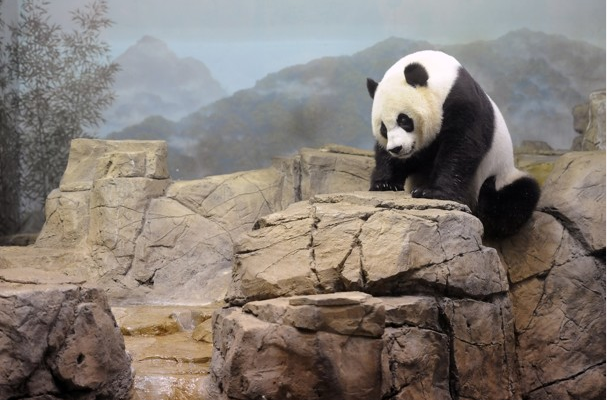There's an orphan planet roaming our galactic neighbourhood.
It's a globe of gas about the size of Jupiter, astronomers say. And it's out there by its lonesome, untethered to any star, drifting about 100 light-years from Earth. In astronomical terms, that's close.
Astronomers have spied lonely planets before. But this newest object, seen near the southern constellation Dorado, is the closest to Earth yet found.
Unobscured by starlight, the new planet — it has no name, just a catalogue number — provides a perfect opportunity for astronomers to learn about the mysterious class of "substellar objects." Such rogue bodies might number in the billions in our galaxy alone.
Advertisement
"There could really be a lot of them," said Christian Veillet, former director of the Canada-France-Hawaii Telescope, who studied the lonely planet. "But it's a big challenge in terms of observing them."
That's because these drifting bodies are dark. With no home star, they reflect no starlight, nor do they generate any. But, like an iron pulled from a fire, the youngest of these objects still glow with the heat of their creation.
In 2009, astronomers in Hawaii spied such a heat signal with an infrared camera. Another team at the Paranal Observatory in Chile then swung a big telescope around to take a peek.
They detected a planet-like object, estimated to be as big around as Jupiter but perhaps four to seven times as massive. Instruments sensed ammonia, methane and water vapour in the object's atmosphere — typical of Saturn, Jupiter, Neptune and Uranus, the gas-giant planets in our own solar system.
By watching the object's motion, astronomer Jonathan Gagne from the University of Montreal concluded that the planet is probably part of the AB Doradus group, a loose collection of 30 stars that formed from the same cloud of galactic gas. That cloud must have broken off a small puff that coalesced into the lonely planet, Gagne and his colleagues surmise.
Connecting the planet to the star group was key to determining that it is young, just 50 million to 120 million years old, Gagne said. Our solar system, in contrast, is 4.5 billion years old. Its youth, in turn, was crucial for classifying the object as a planet-like body rather than a brown dwarf, an object almost large enough to ignite and become a star. To be a brown dwarf, the object would have to be much older, Veillet said.
Astronomers spied the first orphan planets in the late 1990s, said Philip Lucas from the University of Hertfordshire in the UK, who led the first team to spy them. "It was never completely clear from theory if these objects should exist," said Lucas, so he searched for them in a likely locale — a cloud of star-forming gas known as the Orion nebula. His team found more than a dozen likely free-floating planets there.
Last year, a NASA-funded team upped the prospective count dramatically, into the millions. By finding clusters of orphan planets in the dense core of our galaxy, they estimated there might be twice as many such objects in the Milky Way as there are stars. There could be rogue planets everywhere.
Despite growing acceptance of their existence, a debate rages over what to call these objects.
"We call it a 'floating planet'," said Gagne, co-author of an article in the journal Astronomy & Astrophysics describing the find. "But if we want to be strictly correct with the International Astronomical Union, we should call it a 'planetary mass object', or 'planemo'."
The International Astronomical Union caused a cosmic kerfuffle in 2006 when it adopted a definition of "planet" that kicked Pluto out of the club, demoting it to a dwarf planet. That same definition says that to qualify as a planet, an object must be circling a star.
The new object, the orphan of Dorado, does no such thing.
But not every lonely planet is sentenced to an eternity of solitude. In 2006, astronomers at the European Southern Observatory announced finding two big planets circling each other, with no star in between, having linked in a cosmic do-si-do. And earlier this year, the Harvard-Smithsonian Centre for Astrophysics announced that astronomers there were certain that many of these wanderers find a home when they drift near a star, which captures them as adopted members of a star system family.
Whatever its fate, astronomers will be spending more time gazing at the newfound orphan. "We now have this amazing opportunity to study a planet without any starlight polluting it," Veillet said.
more you like ads:
cheap nike nfl jerseys
New Nike NFL Kid Jerseys Nike Nfl Jerseys online









.jpg)



